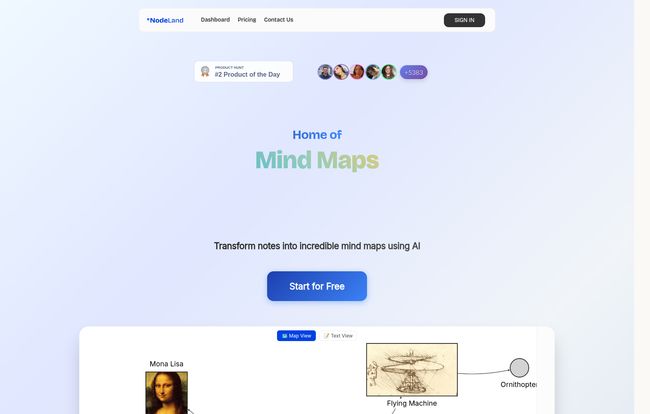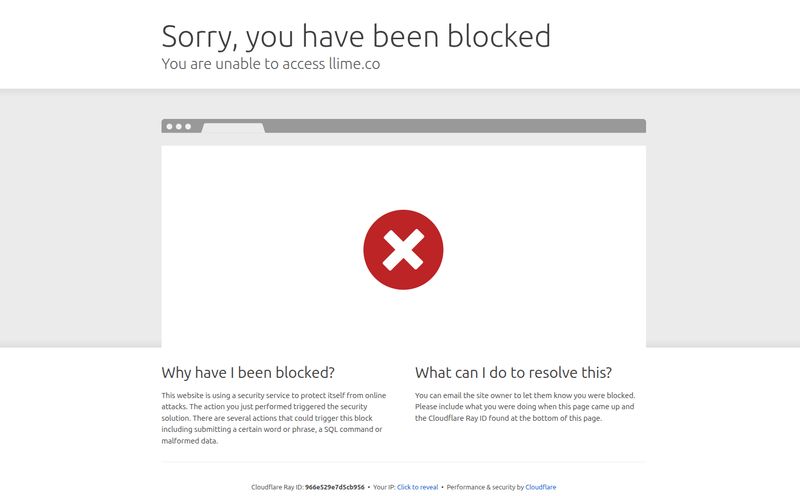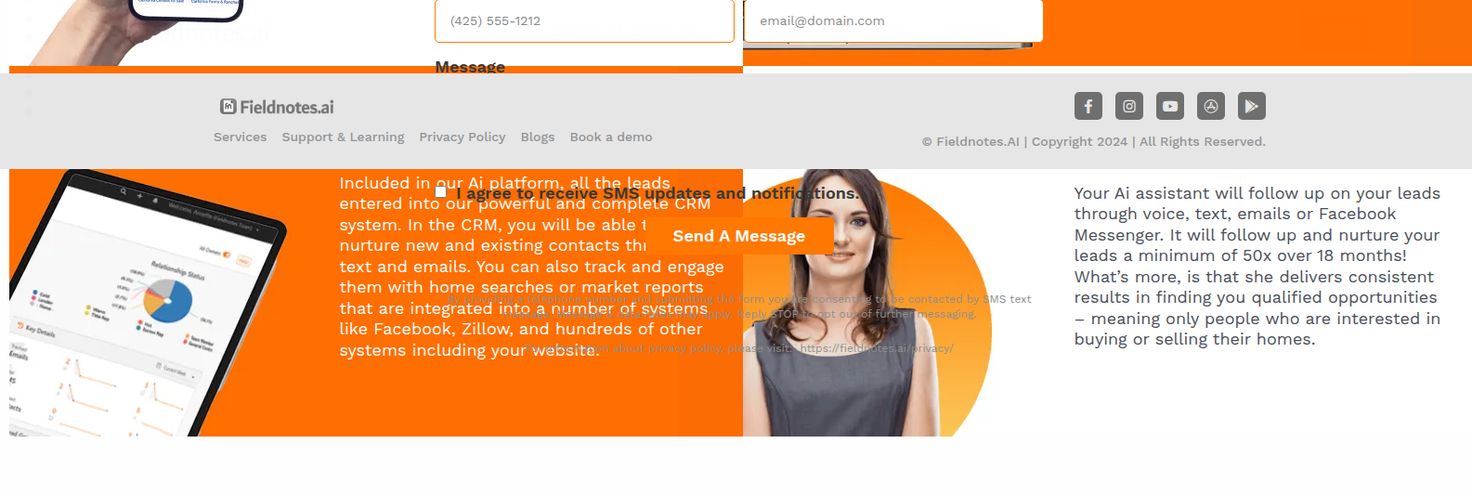If you're anything like me, your digital workspace is a barely-controlled explosion of ideas. You’ve got half-finished outlines in Google Docs, random epiphanies in a notes app, and a constellation of browser tabs that you swear are all for “research.” We’ve all been there, trying to wrestle our chaotic thoughts into the neat, linear boxes that tools like Notion and Evernote provide.
And it works… sort of. Until you realize that our brains don't think in straight lines. They jump, connect, and branch out in a beautiful, messy web. For years, I've been trying to force my non-linear thinking into a linear format. It’s like trying to explain a dream using a spreadsheet. Frustrating, right?
Then I stumbled across NodeLand. It popped up on my radar after making a splash on Product Hunt, and the premise was so simple it felt revolutionary: what if your notes automatically built their own mind map? What if the tool did the connecting for you? I was skeptical, but as a professional SEO and content strategist, my entire job is about connecting ideas. I had to give it a shot.
So, What on Earth is NodeLand?
Imagine if a mind-mapping tool and a note-taking app had a baby, and that baby was raised by an AI tutor. That's NodeLand in a nutshell. It’s not just another place to dump text. It’s a tool built on a connection-based model. Every time you jot down a note or an idea, it becomes a ‘node’ in a larger, interconnected map.
This is the fundamental shift. While I’ve spent countless hours in Miro and XMind manually dragging lines and creating boxes, NodeLand does it organically. You write, it visualizes. It’s designed to mirror how we actually think, creating a dynamic web of knowledge rather than a static list of documents. It’s less like a digital filing cabinet and more like a digital brain that wires itself as you feed it information.

Visit NodeLand
Diving In: My First Impressions and The Features That Matter
Getting started was refreshingly simple. The interface is clean, minimalist, and doesn't bombard you with a million buttons. It feels less intimidating than some of the behemoth project management tools out there. But beneath that simple exterior are some seriously powerful mechanics.
The Magic of Dynamic Mind Maps
This is the core of NodeLand. You start a document, you write, you create sub-points. And as you do, you can see the mind map building itself out in real-time. It’s strangely satisfying to watch. For someone who outlines content all day, this was a revelation. I could draft an entire blog post structure and instantly have a visual, shareable map of the flow, without any extra work. The embed feature is a cherry on top; I can already see myself embedding these directly into client briefs or even blog posts (meta, I know) to illustrate complex topic clusters.
The AI Assistant Is Not Just a Gimmick
I've seen a lot of tools slap "AI-powered" on their marketing and call it a day. Often, it's just a souped-up grammar checker. NodeLand’s AI, powered by GPT-4o, is different. It’s more of an intellectual partner. Stuck on an idea? You can ask the AI to expand on it. Drowning in research? It can summarize entire documents or even web pages and turn them directly into nodes on your map. This is a massive timesaver. I threw a dense article about Google's latest algorithm update at it, and it pulled out the key concepts into a neat, digestible mind map in seconds. That got my attention.
Who Is This Tool Actually For?
While I think almost anyone could benefit from it, a few groups came to mind immediately:
- Students: This seems like an absolute superpower for studying. Turning lecture notes, textbooks, and research papers into connected mind maps? It's visual learning on steroids.
- Writers & Content Creators: For brainstorming, outlining books, or planning a content calendar, this is phenomenal. Visualizing how different topics interlink is gold for building topical authority in SEO.
- Project Managers & Strategists: Laying out project phases, stakeholder maps, or marketing funnels visually can bring so much clarity to a team.
- The Chronic Over-thinker: If you're like me, with a brain that has way too many tabs open, this could be the thing that finally helps you untangle it all.
The Real-World Test: What I Loved and One Tiny Gripe
Okay, let's get down to brass tacks. I’ve used NodeLand for a couple of weeks now to plan out my content queue, and the efficiency boost is real. The clarity it brings is fantastic. Instead of a messy list of article ideas, I have a visual web showing how my posts on 'link building' connect to my series on 'local SEO.' It’s helped me spot content gaps I would've otherwise missed. It’s just... intuitive. My thoughts flow out, and the app just gets it.
Now, is it perfect? Not quite. And here's my one little quibble, which I actually found echoed by another user out there. As your collection of maps grows, there isn’t a global search function that tells you, “Hey, that note about ‘passive income’ is in your ‘Side Hustles 2024’ map.” You have to know which map your information is in. It’s a small thing, and honestly, something I fully expect they'll add down the line. But for now, it's the only thing keeping it from absolute perfection in my book.
Let's Talk Money: The Pricing Breakdown
This is often the make-or-break part, isn't it? I was pleasantly surprised here. NodeLand’s pricing is straightforward and, frankly, very competitive.
| Plan | Price | Key Features |
|---|---|---|
| Free | $0 / month | 1 Document, No AI features. Great for a basic test drive. |
| Premium | $4 / month | Unlimited Documents, AI-Powered Mind Maps (GPT-4o), Document/Webpage Summarization, 3-day trial. |
| Teams | Custom | For 5+ users, includes all Premium features plus team discounts. |
My take? The free plan is just enough to see if the workflow clicks with you. But the Premium plan at $4 a month is a steal. Access to GPT-4o alone is often more than that in other apps. For less than the price of a fancy coffee, you get a powerful tool for thought. For professionals, students, or anyone serious about organizing their knowledge, it's a no-brainer.
My Final Verdict: Should You Switch to NodeLand?
After years of trying to cram my brain into neat little folders, NodeLand feels like a breath of fresh air. It embraces the beautiful chaos of creativity and makes it manageable. It’s not trying to replace Google Docs or be a full-blown project manager. It does one thing—connecting ideas visually—and it does it exceptionally well.
If you're a visual thinker, a student drowning in notes, or a creator looking for a better way to structure your ideas, you owe it to yourself to give NodeLand a try. The learning curve is practically non-existent, and that 'aha!' moment when you see your scattered notes form a coherent map is worth the price of admission alone. It hasn't replaced my other tools entirely, but it's quickly become the starting point for all my new projects. And my brain has never felt more understood.
Frequently Asked Questions
- What makes NodeLand different from Notion or Evernote?
- The biggest difference is the automatic mind map generation. While tools like Notion are linear (page after page), NodeLand is connection-based. It automatically visualizes the relationships between your notes as you write, which is ideal for brainstorming and seeing the bigger picture.
- Is the AI assistant in NodeLand really free?
- The AI features, including the GPT-4o powered assistant and document/webpage summarization, are part of the Premium plan. The Free plan lets you try the basic mind-mapping functionality but does not include the AI.
- How much does NodeLand Premium cost?
- The Premium plan is very affordable at just $4 per month. It also comes with a 3-day trial so you can test out all the features before committing.
- Can I use NodeLand on my phone?
- Yes, the platform is designed for cross-device accessibility, so you can capture and organize your ideas whether you're at your desk or on the go.
- Can I share or export my mind maps?
- Absolutely. One of the great features is the ability to embed your dynamic mind maps on websites or blogs, making it easy to share your visual ideas with others.



